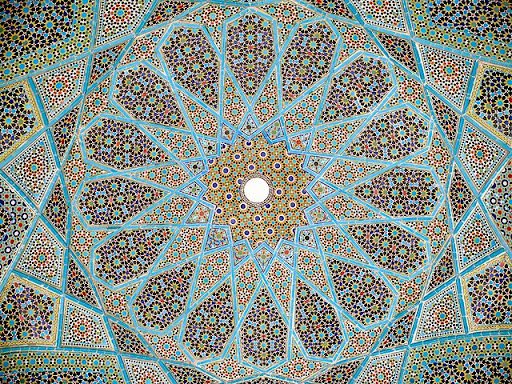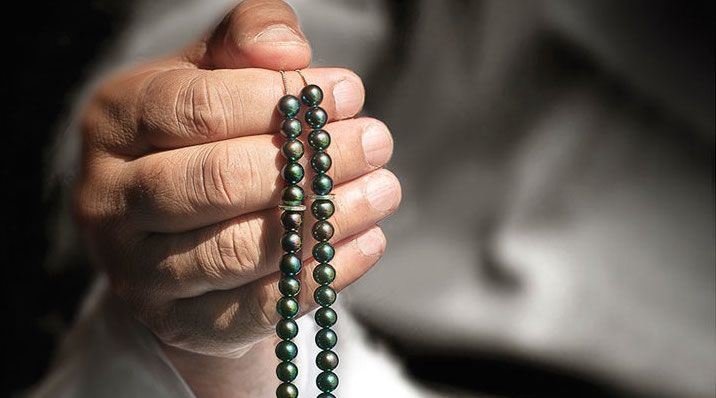Silsila of Sufism, The Sufi Chain
Silsila of Sufism The Sufi Chain
There are manly 4 Silsila of Sufism
Silsila of Sufism Qadiriyyah:
Qadiriyyah (also transliterated Kadri, Elkadry, Kadray, Qadiri or Qadri), is one of the oldest Sufi tariqas. It derives its name from Abdul-Qadir Gilani (radi Allah anhu) (also transliterated as “Jil lani” or “Jailani” and “Jilali” in the Maghreb) AH 470 (1077-1166), a native of the Iranian province of Gilan. In 1134 he was made principal of a Sunni Hanbalite school in Baghdad.
His contribution and renown in the sciences of Sufism and Sharia was so immense that he became known as the spiritual pole of his time, al-Gauth al Azam (the “Supreme Helper” or the “Mightiest Succor”). His writings were similar to those of al-Ghazali in that they dealt with both the fundamentals of Islam and the mystical experience of Sufism.
The Order is the most widespread of the Sufi Orders in the Islamic world and can be found in Afghanistan, India, Bangladesh, Pakistan, Turkey, the Balkans, China, as well as much of the East and West Africa, like Morocco.[citation needed]
There are even small groups in Europe and the Americas. The famous traveller and writer Isabelle Eberhardt also belonged to the Qadiri order.
Silsila of Sufism Naqshbandiya:
The Naqshbandiya tariqah is named after Hadrat Shah Baha al-Din Naqshband Radi Allahu anhu [d.791H / 1389CE] and is a tariqah that is widely active throughout the world today. It is described as the ‘Mother of all Tariqah’s’ by Shaykh Ahmad al-Faruqi al-Sirhindi [d.1034H / 1624CE]( Radi Allahu anhu). There are hundreds of Spiritual Order’s which are all on the correct path but the Naqshbandiya, together with the Qadiriya, Chistiya and Suhrawardiya, are considered as the four main Silsila’s of the Ahl as-Sunnah wa’l Jama’at.
The designation of the Naqshbandi Golden Chain has changed from century to century. From the time of Hadrat Abu Bakr as-Siddiq radi Allahu ta’ala anhu to the time of Hadrat Bayazid al-Bistami radi Allahu ta’ala anhu it was called as-Siddiqiyya. From the time of Bayazid al-Bistami [d.261H] radi Allahu ta’ala anhu to the time of Sayyadina Abdul Khaliq al-Ghujdawani [d.575H] radi Allahu anhu it was called at-Tayfuriyya. From the time of Sayyadina ‘Abdul Khaliq al-Ghujdawani radi Allahu ta’ala anhu to the time of Hadrat Shah Naqshband radi Allahu ta’ala anhu it was called the Khwajaganiyya.
From the time of Hadrat Shah Naqshband [d.791H] radi Allahu ta’ala anhu through the time of Sayyadina Ubaidullah al-Ahrar radi Allahu ta’ala anhu and Sayyidina Ahmad Faruqi [d.1034H] radi Allahu ta’ala anhu, it was called Naqshbandiyya. Naqshbandiyya means to “tie the Naqsh very well.” The Naqsh is the perfect engraving of Allah’s Name in the heart of the murid [disciple]. From the time of Sayyadina Ahmad al-Faruqi [d.1034H] radi Allahu anhu to the time of Shaykh Khalid al-Baghdadi [d.1242H] radi Allahu anhu it was called Naqshbandi-Mujaddidiyya. From the time of Sayyidina Khalid al-Baghdadi [d.1242H] radi Allahu anhu until the time of Sayyadina Shaykh Ismail Shirwani radi Allahu anhu it was called the Naqshbandiyya-Khalidiyya.
Silsila of Sufism Chishtiya:
The Chishti Order is a Sufi order within the mystic branches of Islam which was founded in Chisht, a small town near Herat, about 930 C.E. and continues to this day. The Chishti Order is known for its emphasis on love, tolerance, and openness.
The order was founded by Abu Ishaq Shami (radi Allah anhu) (“the Syrian”) who belonged to Syria introduced the ideas Sufism in the town of Chisht, some 95 miles east of Herat in present-day western Afghanistan. Before returning to Syria Hazrat Shami(radi Allah anhu) initiated, trained and deputized the son of the local Aamir, Abu Ahmad Abdal (radi Allah anhu) (d. 966). Under the leadership of Abu Ahmad’s (radi Allah anhu) descendants, the Chishtiya as they are also known, flourished as a regional mystical order.
The most famous of the Chishti saints is Hazrat Moinuddin Chishti (radi Allah anhu) (popularly known as Gharib Nawaz meaning ‘Benefactor of the Poor’) who settled in Ajmer, India. He oversaw the growth of the order in the 13th century as Islamic religious laws were canonized. Other famous saints of the Chishti Order are Qutbuddin Bakhtiar Kaki (rehmatullah alaih) , Fariduddin Ganjshakar(rehmatullah alaih), Nizamuddin Auliya(rehmatullah alaih), Alauddin Ali Ahmed Sabir Kalyari(rehmatullah alaih), Mohammed Badesha Qadri(rehmatullah alaih), and Ashraf Jahangir Semnani(rehmatullah alaih).
The silsila sabiriiya, Nizamiya and Ashrafiya is the branch of Chistiya Silsila.
Chishti master Hazrat Inayat Khan (rehmatullah alaih) (1882–1927) was the first to bring the Sufi path to the West, arriving in America in 1910 and later settling near Paris, France. His approach exemplified the tolerance and openness of the Chishti Order, following a custom began by Hazrat Moinuddin Chishti (rehmatullah alaih) of initiating and training disciples regardless of religious affiliation and which continued through Nizamuddin Auliya (rehmatullah alaih) and Shaykh ul-Masha”ikh Kalimullah Jehanabadi (rehmatullah alaih) (d. 1720). All his teaching was given in English, and 12 volumes of his discourses on topics related to the spiritual path are still available from American, European, and Indian sources. Initiates of his form of Sufi practice now number in the several thousands all over the world.
A number of Chishti family members are now living in Pakpattan and Bahawal Nagar, North of Punjab, Pakistan.
Silsila of Sufism Suhrawardiyya:
Suhrawardiyya is the name of a Sufi order founded by Iranian Sufi Diya al-din Abu ‘n-Najib as-Suhrawardi (RA) (1097 – 1168).
He was a murid of Ahmad al-Ghazali(RA), who was a brother of Imam Abu Hamid al-Ghazali.c. 545 A.H. he was teaching Shafi’i fiqh at Al-Nizamiyya of Baghdad Academy. His surviving work is called Kitab Adab Al-Muridin.
Many Sufis from all over the Islamic world joined the order under the founder’s nephew Hazrat Shihab ad-din Abu Hafs ‘Umar(RA) (1145-1234), who was sent as emissary to the court of Khwarezm Shah in Bukhara by the Khalifa in Baghdad. His son is buried in Tashkent. Later the Order spread into India through Hazrat Jalaluddin Surkh-Posh Bukhari(RA) and Hazrat Baha-ud-din Zakariya(RA).
The principal role in the formation of a conservative ‘new piety’ and in the initiation of urban commercial and vocational groups into mysticism was played by the Suhrawardiyya silsila. Suhrawardiyya originated in Iraq but succeeded only in India to take shape as a fraternity with its infrastructure, internal hierarchy of members and cloisters and a single centre in Multan and Uchch. The Suhrawardiyya is a strictly Sunni order, guided by Shafi`i madhab. The Suhrawardiyya trace their spiritual genealogy to Hazrat Ali ibn Abi Talib (A.S.)through Junayd Baghdadi and al-Ghazali(RDA).
Shaikh Shihab ad-din Abu Hafs Umar al-Suhrawardi(RA), took recourse to active life, renounced reclusion and excessive fasting, maintained close contacts with the authorities, and undertook diplomatic missions and political settlement of conflicts. His luxurious cloister in Baghdad, with gardens and bath houses, was specially built for him by Caliph an-Nasir, on whose behalf Abu Hafs travelled as an ambassador to the Ayyubid Sultan Malik al-Adil I of Egypt, to Khwarezm-Shah Muhammad of Bukhara and to Kaiqubad I, the Seljuk ruler of Konya.
Shaikh Abu Hafs Umar al-Suhrawardi(RDA), the author of “Awarif al-Ma’arif”, directed his disciples Hazrat Jalaluddin Surkh-Posh Bukhari & Shaikh Baha-ud-din Zakariya of Multan (1182-1262 AD) to make Multan the center of his activity. Iltutmish appointed him as “Shaikhul Islam” after the invasion of Multan and topple its ruler, Qabacha. During the Mongol invasion he became the peace negotiotor between invaders and muslim army.
Another Suharwardi, Hazrat Fakharuddin Iraqi (RA) buried at Konya, Turkey, received formal initiation into the Sufi way under Shaykh Baha’uddin Zakariya (RA), Hazrat Fakharuddin Iraqi (RA) lived in Multan for 25 years as one of the Suhrawardis, composing poetry. As Shaykh Baha’uddin(RA) was dying, he named Hazrat Fakhruddin ‘Iraqi (RA ) to be his successor.
When it became known that Hazrat Fakharuddin Iraqi (RA) had been named head of the Suhrawardi Order, some in the order became jealous and denounced him to the Sultan who sought to have ‘Iraqi arrested.
Hazrat Fakharuddin Iraqi (RA) fled the area with a few close companions, and they eventually made their way to Makkah and Medina. Later they moved north to Konya in Turkey. This was Konya at the time of Rumi. ‘Iraqi often listened to Rumi teach and recite poetry, and later attended Rumi’s funeral.
Although Hazrat Fakharuddin Iraqi (RA) was nominally the head (in exile) of a large and respected Sufi order, he humbly became the disciple of another Sufi master—Hazrat Sadruddin Qunawi(RA), who also lived in Konya at the time. Hazrat Sadruddin Qunawi(RA) was the son-in-law of the recently deceased Sufi philosopher Shaikh Ibn ‘Arabi(RA). Although less known in the West today Hazrat Sadruddin Qunawi(RA) was perhaps the pre-eminent Sufi teacher in Konya at the time, even better known than his neighbor Rumi.
Hazrat Fakharuddin Iraqi (RA) was deeply devoted Hazrat Sadruddin Qunawi(RA) and to the teachings of Ibn ‘Arabi(RA). It was a series of speeches Hazrat Sadruddin Qunawi(RA) delivered on the esoteric meaning of Ibn ‘Arabi’s great works that inspired Hazrat Fakharuddin Iraqi (RA) to compose his own masterpiece of commentary and poetry named the Lama’at or Divine Flashes.
When Fakhruddin ‘Iraqi died he was buried near Ibn ‘Arabi’s (RA)tomb.
Baha-ud-din Zakariya’s(RA) successor then was his son Shaikh Sadruddin ‘Arif(RA). His disciple, Amir Husayn(RA)., the author of “Zad- al-Musafirin”, wrote several works on the doctrine Wahdat al-Wujud. Shaikh Arif’s(RA). son and caliph, Shaikh Ruknuddin (RA). was highly respected by the Delhi Sultans from ‘Alauddin Khilji to Muhammad Ibn Tughlaq.
After the death of Shaikh Ruknuddin(RA) the Suhrawardiyya silsila declined in Multan but became popular in other provinces like Uch, Gujarat, Punjab, Kashmir and even Delhi. Suharawardiyya order of Sufism became popular in Bengal (Contemporary Relevance of Sufism, 1993, published by Indian Council for Cultural relations).
It was popularised and revitalized by Hazrat Jalaluddin Surkh-Posh Bukhari(RA) known as Makhdum Jahaniyan, the world traveler. He was puritan and strongly objected the Hindu influences to Muslim social and religious practices.
Another contemporary mystic who is worthy of mention was Shaikh Sharfuddin Yahya Manairi (RA). (d. 1380 AD). He belonged to the Firdausia order, a branch of Suhrawardiyya. He compiled several books, i.e. “Fawaid al-Muridin”, “Irshadat al-Talibin”,”Rahat al-Qulub”, etc.
IF You need Spiritual guidance for any problem in life, You can send contact by email- sarkarhealing@gmail.com or WHATSAPP





